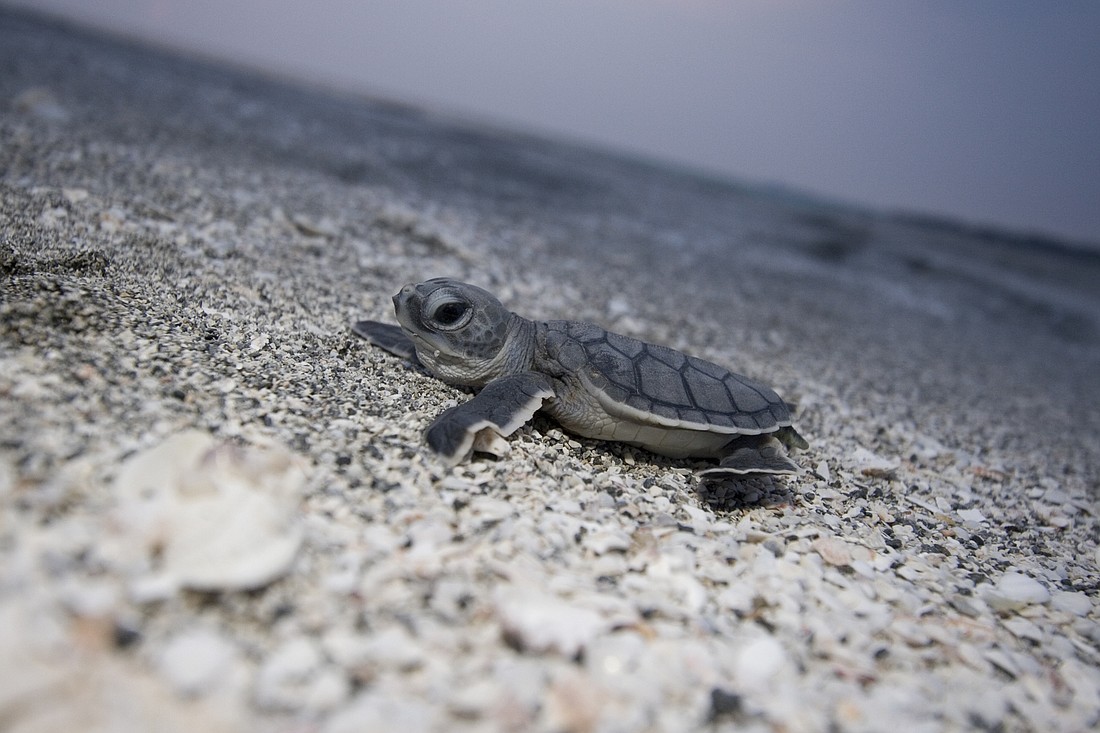- December 18, 2025
-
-
Loading

Loading

It’s the middle of turtle nesting season, and so far, things are going well for our flippered friends. There are enough nests to rival last year’s record-breaking numbers and the number of false crawls is down 32% — and it can likely be attributed to conservation efforts over the past 30 years, Mote scientists say.
“We’ve started seeing the increase just in the past several years, and our program and programs similar to ours have been around about 30 years,” said Melissa Bernhard, a staff biologist at Mote Marine Laboratory. “It takes turtles about 25 to 30 years to mature, so if conservation efforts that were started 35 years ago were starting to reap the benefits now, it makes sense now that they’ve grown up.”
Turtles, which are very choosy when deciding when and where to dig their nests, are spooked by any number of factors, including bright lights, movement nearby or furniture on the beach. Any time a turtle comes out of the ocean to make a nest, but instead turns around and retreats to the ocean is called a “false crawl.”
Last year, when sand was added to some beaches, the number of false crawls increased. According to Bernhard, turtles will typically false crawl about 50% of the time, which the 2017 numbers reflect so far. But last year, they were false crawling at a 3-to-1 or 4-to-1 ratio.
The more normal numbers this year could be because the sand has “evened itself out,” she said, which usually takes about a season.
“I personally think that we don’t know enough about what’s good or bad about the natural beaches to be changing them and saying they’re still good,” Bernhard said.
Despite the beach nourishment, Sarasota County has the highest number of turtle nests for the Gulf Coast. As of July 8, Longboat Key was home to 999 nests, Lido Beach was home to 112 and Siesta Key was home to 488. At this point in 2016, Longboat Key had 572, Lido Beach has 64 and Siesta Key had 195 nests.
Currently, green sea turtle nests are higher than last year, too. As of July 8, Longboat Key had 11 green nests and Siesta Key had two. At this point last year, both Longboat Key and Siesta Key had zero.
Vice President of Longboat Key Turtle Watch Cyndi Seamon said green sea turtle nest counts go up and down each year. Last year was considered a down year, whereas 2017 is considered an up year.
Seamon said the initiation of turtle exclusion devices might be a reason why the population has been increasing. The turtle exclusion devices, TED, are devices that allow sea turtles to escape fishing nets.
And despite the good fortune most of the area beaches are seeing, Seamon said Longboat has seen nine adult disorientations. For a female adult sea turtle to disorient, she has to come up on the beach thinking she’s going to nest, similar to a false crawl. The mother turtle then gets confused, usually by light from waterfront properties or beach furniture, and crawls for a good distance.
“A handful have gone a football length of the beach thinking they were going in the right direction,” Seamon said.
Even at their highest, Sarasota-area beach numbers pale in comparison to the number of nests on the east coast of Florida, Bernhard said.
“People are tripping over turtles, which is good.”
To keep turtle nesting numbers going in the right direction, Mote recommends people encourage nesting by being quiet and not approaching turtles if they see them; avoid using flashlights on the beach at night and shield lights from homes that could confuse the animals; and fill in holes in which hatchling turtles could fall.
“The biggest take-home is we want the beach to be as natural as possible for the turtles, at least at night,” Bernhard said. “When you go to the beach in the morning you can bring whatever you want, but take it all with you when you leave.”